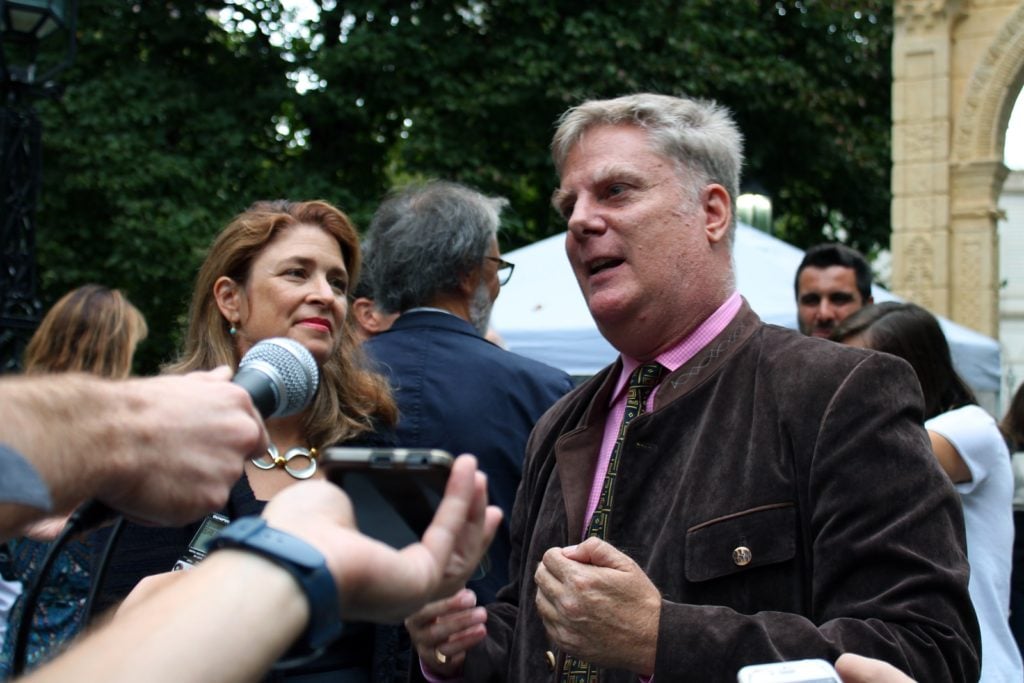Art World
Triumphal Arch of Palmyra, Razed by Isis, Rises Again in City Hall Park
It stands 25 feet tall and weighs nearly 30,000 pounds.

It stands 25 feet tall and weighs nearly 30,000 pounds.

Brian Boucher

As diplomats from around the world converge on New York today for the United Nations General Assembly, a work of ancient Roman architecture from the Syrian site of Palmyra has risen in replica in City Hall Park. It replicates an icon of the ancient city that was destroyed by ISIS, and symbolizes a call for global efforts to preserve cultural heritage.
The Institute for Digital Archeology (IDA), which resides at the University of Oxford, erected the arch, which stands about 25 feet tall and weighs nearly 30,000 pounds. It was made from Egyptian marble by craftsmen in Italy.
“Everything that was great about Palmyra is what is great about New York City,” IDA executive director Roger Michel told members of the press between squalls of rain at the arch’s unveiling on Monday. Two of Palmyra’s distinctive characteristics, he said, were the extent to which its achievements depended on the diversity of its population, and the success of its middle class.

Roger Michel, executive director of the Institute for Digital Archeology. Photo Rain Embuscado.
The ancient city of Palmyra, northeast of Damascus, was an ancient cultural center that came under Roman control in the first century AD and was a vital link on the trade route linking Persia, India, and China to the Roman Empire, according to the World Heritage Convention.
The arch remains on view this week, for the duration of the General Assembly, after which it will head to Dubai, and then, Michel said, to a final, undisclosed home somewhere in the Middle East.
Among IDA’s other projects are the Million Image Database, an initiative undertaken in collaboration with UNESCO that aims to preserve photographs of threatened artifacts. Also in the works are efforts to record areas in Italy that were hit by recent earthquakes.
If you are in the city and need further incentive to head downtown, also on view in City Hall Park (through September 29) is the Public Art Fund’s exhibition “The Language of Things,” featuring sculptures by artists including Carol Bove and Adam Pendleton, and live performances staged by Tino Sehgal.